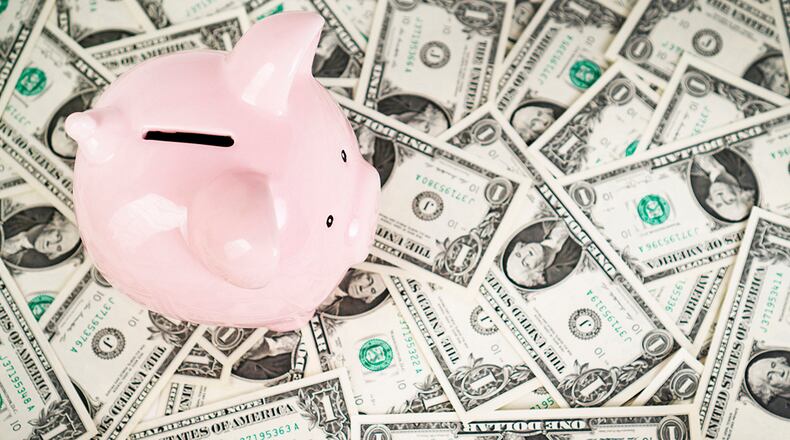The ultimate goal of saving money typically comes down to one thing: financial independence. While the concept might mean different things to different people, it’s really about having control over your own life and your own decisions.
When you start saving, it’s important to have a plan to make sure you’re prioritizing certain goals — and to make sure you’re adequately prepared for each of them.
So to help you get your savings on the right track, we've rounded up some mistakes that Bankrate found new savers often make — and tips to help you avoid them!
1. Not having an emergency fund
If you're just starting to save, the best place to start is with an emergency fund.
Many people don't realize how detrimental the cost of an emergency can be to their finances until it's too late. In fact, almost two in three Americans, including 46% of the highest-income households, don't have enough savings to pay for a $500 car repair or a $1,000 emergency room bill. On top of that, imagine if you lost your job and had nothing in savings to cover your basic needs.
The best way to save for unexpected financial shocks is to have two separate emergency funds: a rainy day fund and an emergency fund.
A rainy day fund is money you might dip into every once in a while to cover an unexpected expense, like a medical bill.
An emergency fund is a bigger, longer-term savings fund. This money should be able to cover at least three to six months worth of living expenses in case you can’t work for a period of time, for whatever reason.
To start building the savings, go through your budget and find areas you can cut. After reducing some expenses and cutting out other unnecessary ones, you may find that you can save a few hundred dollars a month.
2. Putting emergency savings in a place that’s difficult to access
When it comes to emergency savings, you want the money to be in an account that’s easily accessible — like a savings account. If you tie the money up in a long-term investment account — such as a retirement account — or even in a shorter-term investment account, you could end up paying huge fees if you have to take the money out before a specific date.
One easy way to do it is to set up two separate savings accounts — one for the rainy day fund and one for the bigger emergency fund.
3. Not making it automatic
If you don’t automate your savings, you’re much more likely to reach the end of the month and realize you have a lot less to put into savings than you had planned. The best savers know not to rely on willpower — especially when you’re just starting to save.
If you make it automatic, the money comes out of your paycheck before you have a chance to spend it — and not only will that allow you to save more over time, but it will also help you develop better habits and learn to live on less.
And this goes for all of your savings goals, not just emergency savings. If you want to buy a house in the near future, make sure to prioritize that savings goal by putting the money in a place where you can’t spend it on unnecessary purchases. You’ll thank yourself when it comes time for that down payment!
So once you have your savings accounts in place, set up your direct deposit so that a specific amount comes out of each paycheck and goes directly into each account. After just a few months, you’ll be able to see your savings really start to grow!
4. Using your head instead of an app
Keeping track of your budget and savings goals can be a whole lot easier with a little help! There are tons of great apps and websites out there that will track your spending and savings for free — so you can keep tabs on each area of your budget and where every dollar is actually going.
Here are some resources to find the best app for you:
5. Putting off high-interest debt
Ignoring high-interest debt — like credit card debt — can cost you a lot of money over time. So if you have debt you need to pay off, ideally you want to do it as quickly as possible — so you pay less in interest. The longer that debt sits there, the more it’ll end up costing you.
RELATED: Pay these bills first when you’re strapped for cash
But at the same time, you also want to make sure you have at least some money in savings, because in the case of an emergency, the last thing you want to do is charge it to a credit card.
So it’s important to prioritize both. And here’s a way to do it: take any extra money you have each month and put half toward the debt and half into savings. Then once you have a sufficient emergency savings fund built up, put all that extra money toward paying off the high-interest debt. If you come into big sums of cash, like a tax refund or bonus at work, use it to pay down that debt.
Another way to get it paid off quicker is to make some extra cash on the side. Here are 11 ways to make an extra $1,000 or more.
There are also several apps that can help you pay off debt quicker by keeping you on track with payments and tracking your progress — so you can see how each payment gets you one step closer to becoming debt-free.
And once that debt is paid off, you'll really be able to see your savings start to grow!
About the Author
Keep Reading
The Latest
Featured


